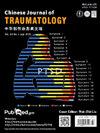中心静脉血氧饱和度变化是脓毒性休克患者 CI 变化的可靠预测指标:探讨潜在的影响因素
IF 1.9
4区 医学
Q2 ORTHOPEDICS
引用次数: 0
摘要
目的:在几项研究中,依靠中心静脉氧饱和度(ScvO2)评估液体反应性会产生不同的结果。本研究旨在确定ScvO2变化(ΔScvO2)检测通气感染性休克患者液体反应性的能力及其潜在影响因素。方法在这项前瞻性单中心研究中,所有患者于2023年2月至2024年1月接受液体刺激。通过间接量热法测量耗氧量,经胸超声心动图测量的心脏指数(CI)升高≥10%定义为液体反应性。通过多元线性回归分析,评价耗氧量、动脉血氧饱和度、CI、血红蛋白对ScvO2的影响及其在液体刺激前后的变化。对连续数据的正态性采用Shapiro-Wilk检验。采用双尾Student t检验、Mann Whitney U检验和卡方检验对流体反应者和无反应者进行数据比较。配对t检验用于正态分布数据,而Wilcoxon符号秩检验用于偏态数据,以比较流体挑战前后的数据。结果49例患者中,男性31例,年龄(59±18)岁,27例有应答。患者入组时急性生理和慢性健康评估II评分为24±8分,序期器官衰竭评分为11±4分,血乳酸水平为(3.2±3.1)mmol/L。液体刺激后,应答者的ΔScvO2 (mmHg)大于无应答者(4±6比1±3,p = 0.019)。多元线性回归分析显示CI是ScvO2的唯一独立影响因素,R2 = 0.063, p = 0.008。液体刺激后,CI的变化成为ΔScvO2的唯一影响因素(R2 = 0.245, p <;0.001)。ΔScvO2对应答者和无应答者有较好的区分能力,阈值为4.4%(曲线下面积= 0.732,p = 0.006)。ConclusionΔScvO2作为ΔCI的可靠替代标记物,可用于评估流体反应性,因为CI的变化是ΔScvO2的唯一影响因素。在稳定的血红蛋白条件下,ScvO2的绝对值可以作为独立于耗氧量的足氧输送的监测指标。本文章由计算机程序翻译,如有差异,请以英文原文为准。
Central venous oxygen saturation changes as a reliable predictor of the change of CI in septic shock: To explore potential influencing factors
Purpose
Assessing fluid responsiveness relying on central venous oxygen saturation (ScvO2) yields varied outcomes across several studies. This study aimed to determine the ability of the change in ScvO2 (ΔScvO2) to detect fluid responsiveness in ventilated septic shock patients and potential influencing factors.
Methods
In this prospective, single-center study, all patients conducted from February 2023 to January 2024 received fluid challenge. Oxygen consumption was measured by indirect calorimetry, and fluid responsiveness was defined as an increase in cardiac index (CI) ≥ 10% measured by transthoracic echocardiography. Multivariate linear regression analysis was conducted to evaluate the impact of oxygen consumption, arterial oxygen saturation, CI, and hemoglobin on ScvO2 and its change before and after fluid challenge. The Shapiro-Wilk test was used for the normality of continuous data. Data comparison between fluid responders and non-responders was conducted using a two-tailed Student t-test, Mann Whitney U test, and Chi-square test. Paired t-tests were used for normally distributed data, while the Wilcoxon signed-rank test was used for skewed data, to compare data before and after fluid challenge.
Results
Among 49 patients (31 men, aged (59 ± 18) years), 27 were responders. The patients had an acute physiology and chronic health evaluation II score of 24 ± 8, a sequential organ failure assessment score of 11 ± 4, and a blood lactate level of (3.2 ± 3.1) mmol/L at enrollment. After the fluid challenge, the ΔScvO2 (mmHg) in the responders was greater than that in the non-responders (4 ± 6 vs. 1 ± 3, p = 0.019). Multivariate linear regression analysis suggested that CI was the only independent influencing factor of ScvO2, with R2 = 0.063, p = 0.008. After the fluid challenge, the change in CI became the only contributing factor to ΔScvO2 (R2 = 0.245, p < 0.001). ΔScvO2 had a good discriminatory ability for the responders and non-responders with a threshold of 4.4% (area under the curve = 0.732, p = 0.006).
Conclusion
ΔScvO2 served as a reliable surrogate marker for ΔCI and could be utilized to assess fluid responsiveness, given that the change in CI was the sole contributing factor to the ΔScvO2. In stable hemoglobin conditions, the absolute value of ScvO2 could serve as a monitoring indicator for adequate oxygen delivery independent of oxygen consumption.
求助全文
通过发布文献求助,成功后即可免费获取论文全文。
去求助
来源期刊

Chinese Journal of Traumatology
ORTHOPEDICS-
CiteScore
3.80
自引率
4.80%
发文量
1707
审稿时长
28 weeks
期刊介绍:
Chinese Journal of Traumatology (CJT, ISSN 1008-1275) was launched in 1998 and is a peer-reviewed English journal authorized by Chinese Association of Trauma, Chinese Medical Association. It is multidisciplinary and designed to provide the most current and relevant information for both the clinical and basic research in the field of traumatic medicine. CJT primarily publishes expert forums, original papers, case reports and so on. Topics cover trauma system and management, surgical procedures, acute care, rehabilitation, post-traumatic complications, translational medicine, traffic medicine and other related areas. The journal especially emphasizes clinical application, technique, surgical video, guideline, recommendations for more effective surgical approaches.
 求助内容:
求助内容: 应助结果提醒方式:
应助结果提醒方式:


